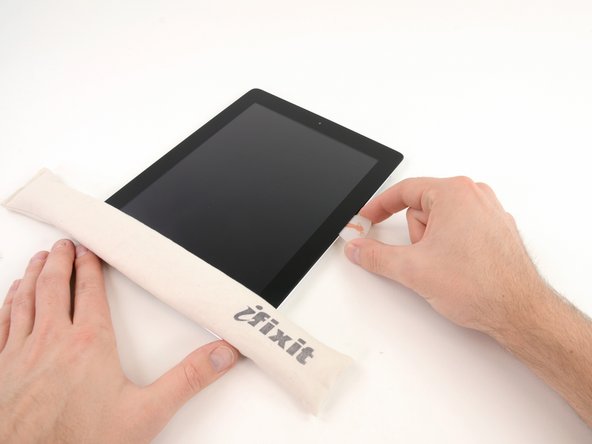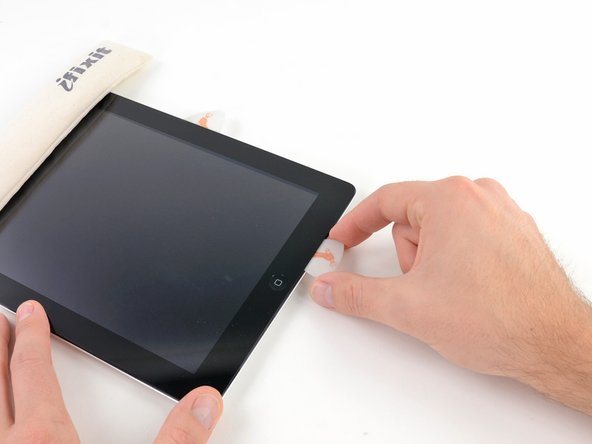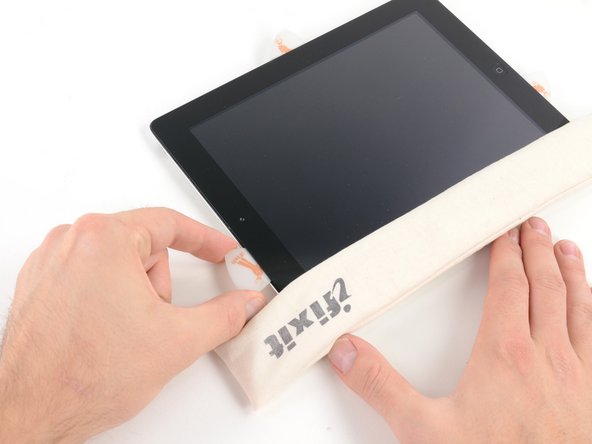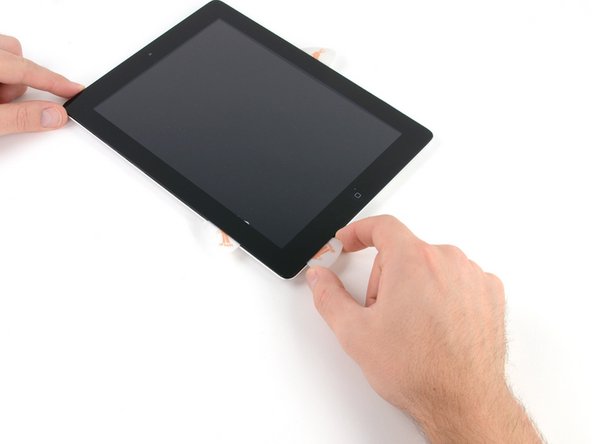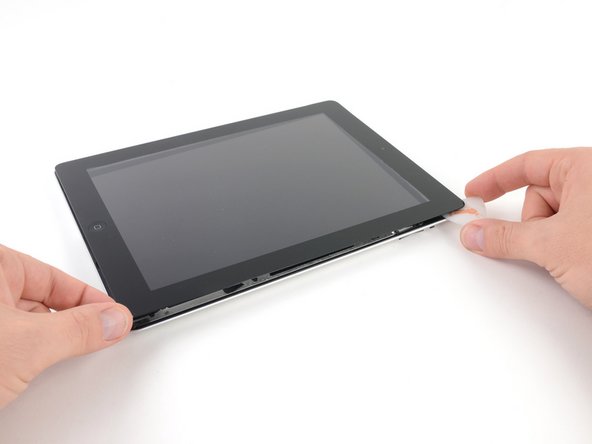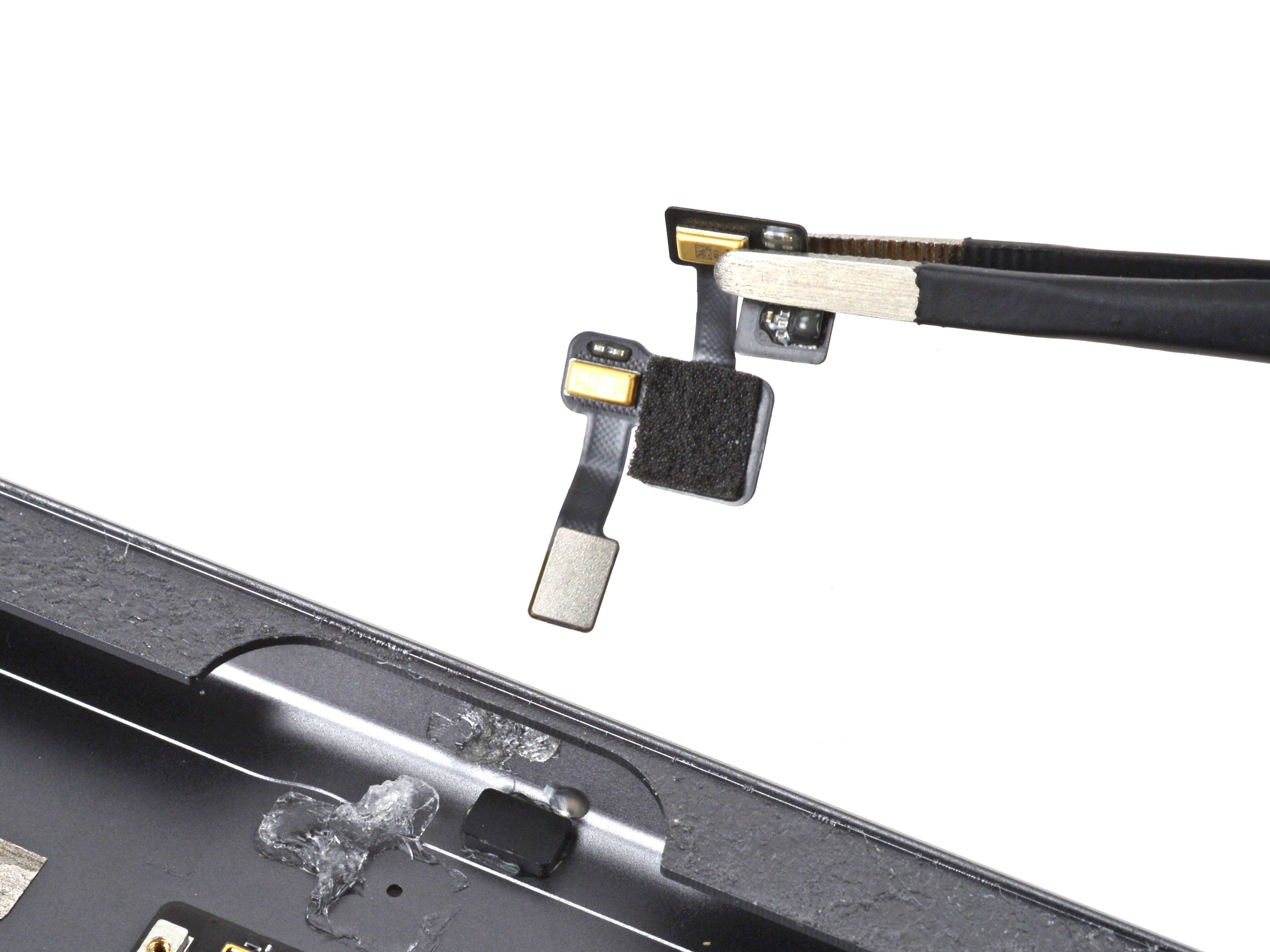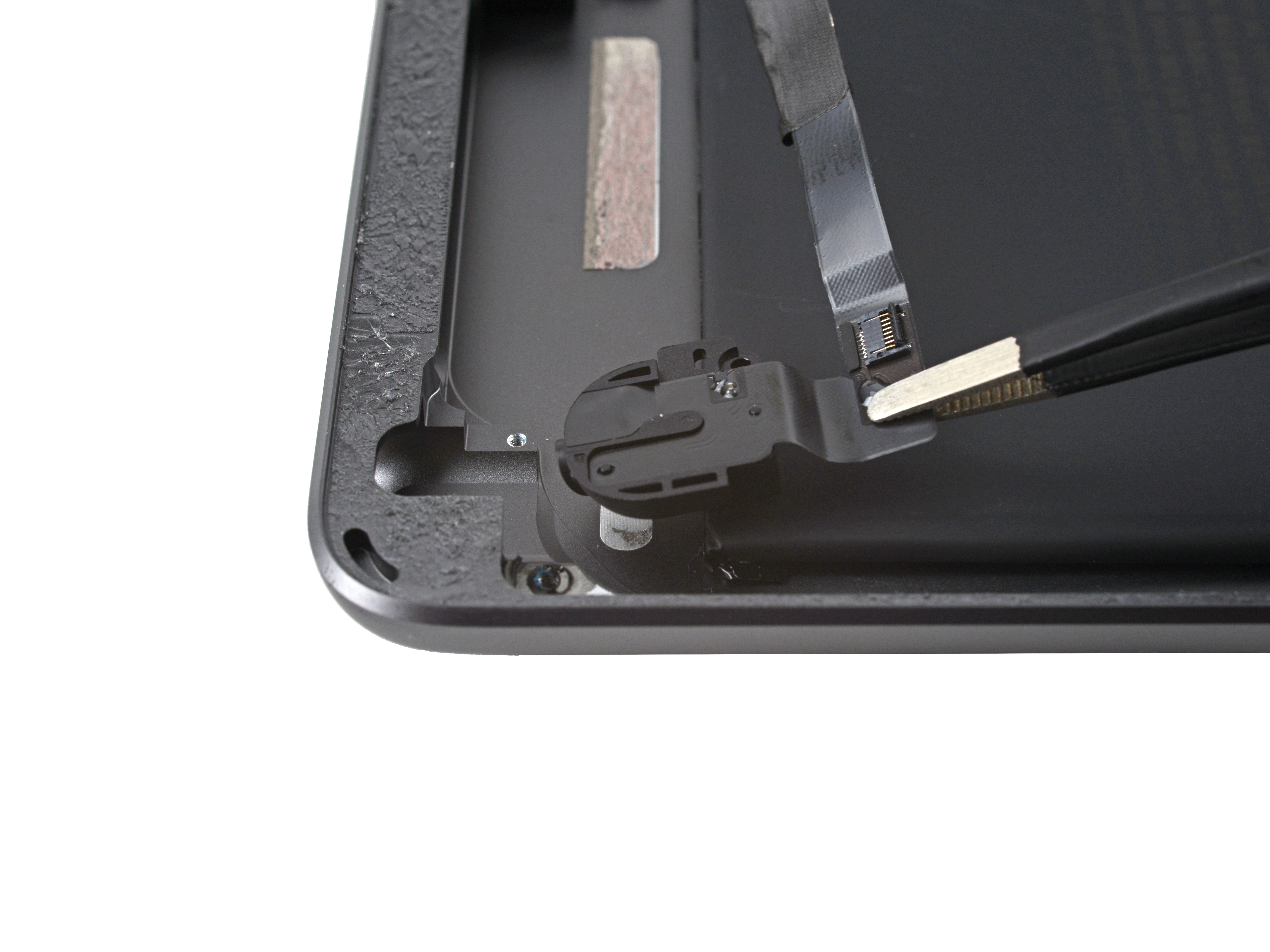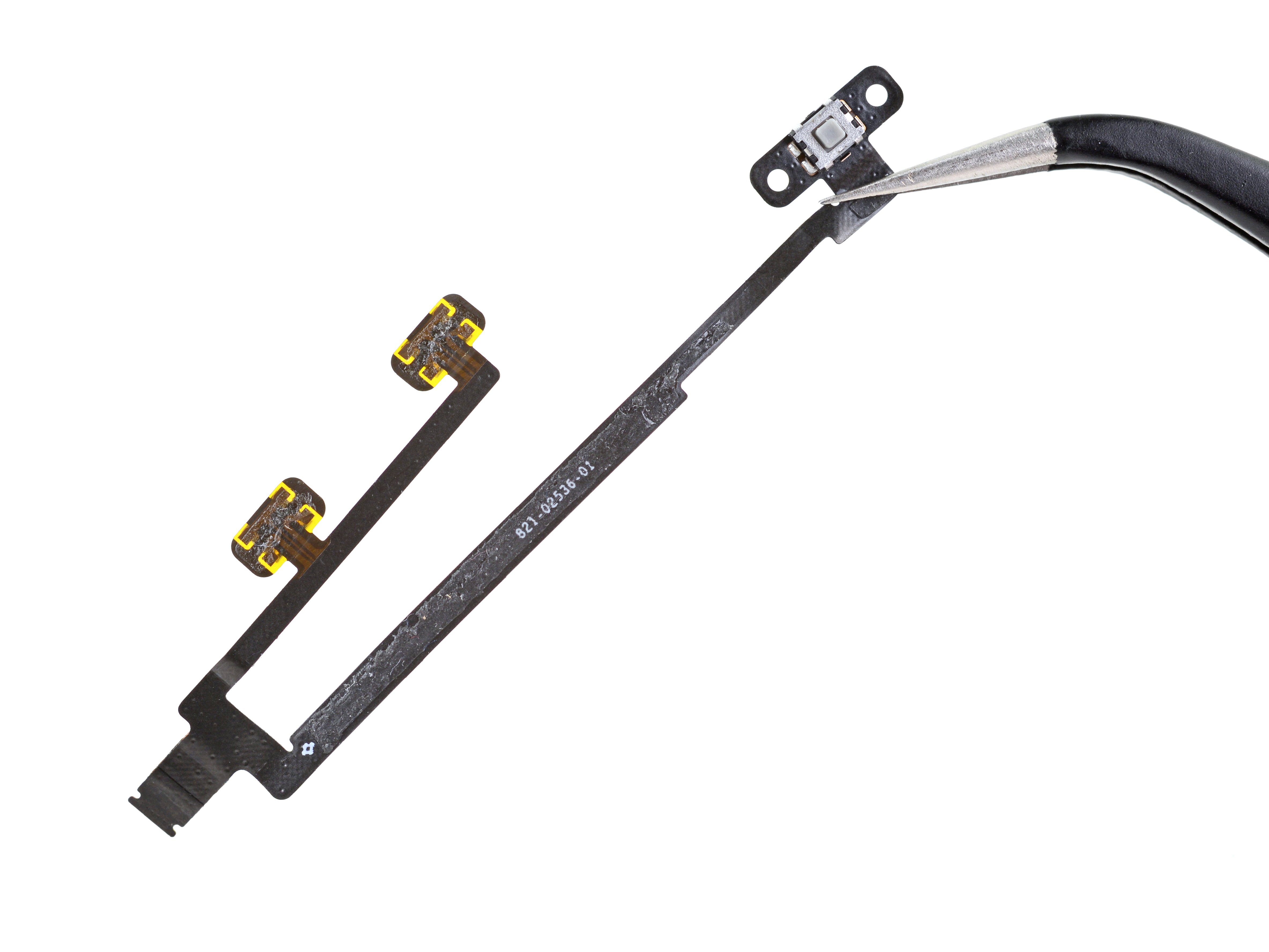How to Replace iPad 4 CDMA Front Panel Guide
Duration: 45 minutes
Steps: 49 Steps
Heads up! Before you dive in, make sure you’ve got the right tools and a comfy spot to work. If you run into any bumps along the way, don’t hesitate to reach out—just schedule a repair and we’ll lend a hand!
Hey there! You’ve got yourself a complete guide for swapping out that plain front panel. If you’re lucky enough to have a Front Panel Assembly replacement part, pause right before you take off the home button from your old front panel. Then just flip those steps around to pop in your shiny new front panel assembly. And remember, if you need help, you can always schedule a repair.
Step 1
It’s a great idea to give your microwave a little cleaning before diving in. Trust us, you don’t want any sticky leftovers clinging to the iOpener later on!
– Pop the iOpener right in the middle of the microwave like it’s the star of the show.
Tools Used
Step 2
Take it easy with the iOpener! We don’t want it to go all dramatic and burst on us. Keep the heat below 100˚C (212˚F) for a smooth repair experience.
If the iOpener looks like it’s been hitting the gym and is a bit swollen, steer clear of it.
If the center of the iOpener is still too hot to handle, just hang tight and let it cool down a bit more before giving it another go. A well-heated iOpener should keep its warmth for up to 10 minutes—perfect for your repair time!
– Pop that iOpener in the microwave for a quick thirty seconds to get it nice and toasty.
– As you work your magic on the repair, keep an eye on the iOpener—when it starts to cool down, just give it another thirty seconds in the microwave to bring back the heat.
Tools Used
Step 3
Caution! The iOpener is going to be super toasty, so handle it with care. An oven mitt can be your best buddy here if you need it!
– Carefully take the iOpener out of the microwave, gripping one of the flat ends to keep your fingers safe from that hot center. You’ve got this!
Tools Used
Step 4
If you don’t have a microwave handy, no worries! Just pop your iOpener in some boiling water to heat it up.
– Grab a pot or pan and fill it up with enough water to completely cover your iOpener.
– Bring that water to a rolling boil and then turn off the heat—safety first!
– Carefully place the iOpener into the warm water and let it soak for 2-3 minutes. Just make sure it’s fully submerged for maximum warmth.
– Using tongs (because we want to keep those fingers safe!), pull out the heated iOpener from the water.
– Give the iOpener a good towel dry—let’s keep it nice and neat!
– And voilà! Your iOpener is all set to go! If you ever need to warm it up again, just repeat the boiling water trick and let it soak for another 2-3 minutes. If you need help, you can always schedule a repair.
Tools Used
Step 5
Rock those safety glasses to keep your peepers safe, and watch out for that LCD screen – it’s more fragile than it looks!
– If your display glass has a crack, let’s keep things from getting worse and protect yourself during the repair by applying some tape to the glass.
– Cover the iPad’s display with overlapping strips of clear packing tape until it’s completely sealed up.
– Try your best to stick to the guide as it lays out the steps. Just a heads up, once the glass starts to break, it might keep cracking as you work, and you might need to grab a metal prying tool to help scoop out the glass.
Step 6
Just a friendly reminder: while you’re diving into this repair, you might encounter some pesky shards of broken glass. To keep those peepers safe from any flying bits, we highly suggest rocking a pair of safety glasses. Better safe than sorry, right?
– Position the iOpener snugly against the right edge of your iPad, ensuring it makes solid contact with the surface. Give it a little love by smoothing it out!
– Now, let the bag chill on the iPad for about 90 seconds. This will warm things up nicely for a smooth opening of the front panel!
Tools Used
Step 7
You might need to give it a little nudge to slide that wedged tip of the opening tool between the glass and plastic. Take your time and be gentle, wiggling the plastic tool back and forth as needed. You’ve got this!
– Check out the tiny gap in the iPad’s adhesive ring located in the upper right corner, about 2.0 inches (~5 cm) from the top. It’s your secret entrance to tackle this repair!
– Now, let’s get down to business. Position your tool right by the mute button and gently insert the tip of a plastic opening tool into that little gap between the front glass and the plastic bezel. Just slide in the very tip, just enough to nudge the crack wider. You’ve got this!
Step 9
– Keep the plastic opening tool snugly in the gap between the front glass and the plastic bezel, then slide a plastic opening pick right alongside it to widen the space. You’ve got this!
Step 10
– Take that trusty plastic opening tool out of your iPad’s pocket, and gently slide the opening pick a little deeper under the front glass, about half an inch down. You’ve got this!
Step 12
The adhesive is super strong, so you might need to put in a bit of muscle. Just take your time and be gentle with it!
If you spot the tip of that nifty opening pick peeking out from under the front glass, give it a gentle tug. No worries! Using the pick this deep won’t cause any harm, but it might leave a little adhesive party on the LCD. Just a heads up!
– As the iOpener warms up the bottom edge, let’s get started on freeing the adhesive from the right edge of your iPad.
– Gently glide the opening pick down the edge of the iPad, releasing that sticky adhesive along the way!
Tools Used
Step 13
As you peel away the adhesive, you might find it helpful to slide the heated iOpener back over to the right edge of the iPad. This little dance depends on how much time the iPad has spent cooling down while you’ve been busy working your magic.
– If your trusty opening pick gets a bit too cozy with the adhesive, give it a gentle ‘roll’ along the side of the iPad to help loosen that sticky stuff up. You’ve got this!
Tools Used
Step 14
– Before you pop that first opening pick into the bottom corner of your iPad, slide a second pick under the right edge of the front glass. This little buddy will help keep the adhesive from getting all clingy again!
– Give your iOpener a little reheat love, then place it on the top edge of the iPad. You’re almost there!
Tools Used
Step 15
Hey there! Just a heads up: the Wi-Fi antenna is snugly fitted to the bottom right edge of your iPad’s rear case with some screws and a cable. Since it’s positioned in a way that requires a bit of finesse, be sure to take your time and handle it gently. We wouldn’t want you to accidentally cause any harm to that precious Wi-Fi antenna!
– Hold onto your hats, because we’re diving into the next few steps with a sprinkle of caution! 🎩✨
– Your mission, should you choose to accept it, involves gently releasing the adhesive that’s keeping the antenna cozy with the front panel. Just be extra careful not to disturb those delicate parts that connect the antenna to the bottom of the iPad. Follow the upcoming steps with care, and you’ll be golden!
Step 16
Be careful not to slide the pick too far past the bottom right corner. You wouldn’t want to accidentally give the Wi-Fi antenna a little love tap, right?
– Gently slide that opening pick around the bottom right corner of the iPad to free up the adhesive. You’re doing great!
Step 17
As you glide that opening pick along the bottom right edge of the front panel, keep an eye out! The Wi-Fi antenna is sneaky and hangs out close to the corner, so be gentle—if you disturb the adhesive too roughly, it might just wave goodbye. You’ve got this!
Just a heads up! Don’t pull that pick all the way out from under the front glass. Give it a little tug so that about 1/8″ (3 mm) of the tip stays snugly in place. You’ve got this!
– Gently glide the edge of your trusty opening pick along the bottom of the iPad to peel away the adhesive near the Wi-Fi antenna. You’ve got this!
Step 18
– After you’ve navigated past the Wi-Fi antenna (that’s about 3 inches or 75 mm from the right edge, right next to the home button), carefully slide that opening pick back in all the way.
– Now, give that pick a gentle nudge to the right to break free the adhesive that’s holding the Wi-Fi antenna snug against the front glass.
Step 19
Keep the iOpener’s heating sessions to a minute max, and give it a cool two-minute break before giving it another go.
– Keep on peeling away the adhesive at the bottom of the iPad, gently pulling the opening pick out far enough to sneak around the home button. Once you’ve bypassed the home button, slide that pick back in about 1/2 inch (10 mm) for a smooth operation.
Tools Used
Step 20
– Keep peeling that adhesive right along the bottom edge of the iPad—you’re doing great!
– Pop that opening pick right under the front glass close to the home button and let it chill there.
Step 22
If the adhesive has gotten a bit too cool for comfort, just swap in a fresh iOpener along the top edge and keep on going. And if your iOpener is feeling a little chilly, give it a quick reheat and get back to work!
– Gently glide the opening pick along the top edge of your iPad, giving it a little tug to navigate around the front-facing camera bracket.
– The adhesive in this area is pretty tough, so you might need to apply a bit of muscle. Take your time and be cautious to avoid any mishaps with yourself or your iPad.
– If the opening pick feels like it’s stuck in the adhesive, try to ‘roll’ it as illustrated in step 9.
Tools Used
Step 23
If the adhesive is feeling cozy and warm, go ahead and take the iOpener off the iPad for some hassle-free maneuvering. But if it’s still giving you a sticky situation, just give that iOpener another warm-up and place it on the left edge while you get to work.
– Keep peeling away the adhesive along the top edge of the iPad, and gently maneuver the opening pick around the top left corner.
Tools Used
Step 24
The digitizer cable hangs out around 2″ (50 mm) from the bottom of your iPad. When you get to about 2.25″ (60 mm) from the bottom, it’s time to pause the pick action. You’ve got this!
– Gently glide that opening pick along the left side of your iPad, and watch as the adhesive lets go. This area is pretty thin since it’s home to the digitizer, so keep your pick shallow—no more than 1/2 inch (10 mm) deep—to keep everything safe and sound!
Step 25
Be super careful! The bottom of the digitizer cable is just about 1 inch (25 mm) from the bottom of the iPad. Take your time and watch out for that cable – we don’t want it to get snipped!
– With that trusty opening pick still wedged under the bottom edge of your iPad, gently peel away the adhesive at the bottom left corner. You’ve got this!
Step 26
– Grab one of those handy opening picks and gently nudge up the bottom right corner of your iPad. Then, give it a little lift with your fingers like you’re unveiling a surprise!
Step 27
Watch out for any sticky bits that might still be hanging on! Grab an opening pick and carefully slice through any adhesive that’s keeping the front panel in place. You’ve got this!
– With a gentle grip on the iPad’s top and bottom right corners, give the front glass a little twist away from the device.
– When you’re putting everything back together, grab a microfiber cloth and some compressed air to wipe away any pesky dust or fingerprints from the LCD before you seal it up with the glass.
Step 28
The bottom left screw is hiding behind the home button ribbon cable connector. Gently shift that ribbon cable out of the way to access and remove the bottom left screw. If you need help, you can always schedule a repair.
– Carefully take out the four tiny 2 mm Phillips #00 screws that are holding the LCD snugly to the aluminum frame. You’ve got this!
Step 29
Handle the LCD with care! That ribbon cable is a bit of a diva and could snap if you bend it too much. Keep it cool and gentle, and you’ll be just fine.
– Grab your trusty plastic opening tool or spudger and gently pry up the right edge of the LCD from the iPad. You’ve got this!
– Now, swing that LCD around on its left edge and let it rest comfortably on the front glass panel. Easy peasy!
Tools Used
Step 30
– Grab your trusty spudger and gently lift the tape that’s hiding the LCD ribbon cable connector. You’ve got this!
Tools Used
Step 31
– Gently flip up that little flap on the LCD ribbon cable ZIF connector—it’s like a tiny door waiting to be opened!
– Now, with your fingers or a trusty pair of tweezers, carefully pull the LCD ribbon cable out from its cozy home on the logic board.
– If the LCD screen decides to play hard to get and doesn’t light up after reconnecting the ZIF connector, just give your iPad a little pep talk! Hold down the power and home buttons together for at least ten seconds until you see that familiar Apple logo pop up. You’ve got this!
Tools Used
Step 32
– Gently lift the LCD away from the front panel without making contact with its surface. You’ve got this!
Step 33
If there’s any electrical tape hanging out, go ahead and peel it off to free the Wi-Fi antenna, speaker cable, and home button ribbon cable. Let’s get those parts ready for action!
Step 34
– Gently lift the retaining flap on the home button ribbon cable ZIF connector to set yourself up for success!
Step 35
– Grab a trusty pair of tweezers and gently tug the home button ribbon cable straight out of its cozy socket on the logic board. You’ve got this!
Tools Used
Step 36
– Carefully guide the home button ribbon cable out from its snug little spot in the rear case. You’ve got this!
Step 37
– With the spudger’s tip in hand, gently lift the tape that’s keeping the digitizer ribbon cable snugly attached to the logic board. You’ve got this!
Tools Used
Step 38
– Gently lift up the retaining flap on each of the digitizer ribbon cable ZIF connectors. Let’s get those connections ready!
Step 39
– Grab your trusty spudger and gently pry up the adhesive holding down the digitizer ribbon cable. You’ve got this!
– Once you’re in, smoothly pull the digitizer ribbon cable straight out of its cozy sockets on the logic board. Easy peasy!
Tools Used
Step 40
– Gently lift the digitizer ribbon cable and grab your trusty spudger. Use its flat end to carefully break free the adhesive that’s holding the cable to the rear aluminum case. You’ve got this!
Tools Used
Step 41
– With a little finesse, gently tug on the digitizer ribbon cable to free it from its cozy spot in the aluminum frame.
– Carefully lift the front panel off your iPad like you’re unveiling a surprise gift.
Step 42
Just a friendly reminder to keep the iOpener nice and cool during your repair adventure! We suggest giving it a breather for at least two minutes before giving it another heat-up hug.
The home button assembly is glued to the front panel, and using an iOpener to gently warm up that adhesive is a smart move. Let’s get that button ready for action!
– Pop that iOpener into the microwave and let it bask in the heat for one minute at full power—if you’re using the newer gel-filled version, just thirty seconds will do the trick!
– Now, gently place the warm iOpener right over the home button on the front edge of the display.
Tools Used
Step 43
– Gently detach the home button ribbon cable from the front panel, taking your time to ensure everything stays in tip-top shape!
Step 44
– Gently slide the plastic opening tool beneath the right side of the home button assembly and give it a little upward nudge to break free the adhesive on that side.
– Now, using the same method, coax the adhesive on the left side of the home button to let go.
– Carefully lift the home button mount off the front panel, and voilà!
Step 45
– Gently slide the edge of your trusty plastic opening tool underneath the home button mounting bracket.
– Carefully glide the tool along the retaining spring bracket to release that sticky adhesive.
– Now, give a little tug and pop that home button with its mounting bracket right off the front panel!
Step 46
The camera bracket is glued to the front panel, so it’s best to warm things up a bit with an iOpener to make it easier to detach. You’re doing great!
– Check out the iOpener heating guidelines at the start of this guide to get things warmed up just right.
– Now, place the iOpener gently over the front-facing camera at the top edge of your display. You’re doing great!
Tools Used
Step 47
Give the camera bracket a gentle nudge, and watch it glide about 2 mm to the right or left, depending on your push. It’s all about that sweet, smooth motion!
– Grab your trusty spudger and gently nudge that camera bracket off its sticky perch on the front panel. You’re doing great!
Tools Used
Step 48
– Gently lift the camera bracket off the front panel and set it aside with care.
Step 49
– The front panel is still in place. Let’s keep it that way!
























